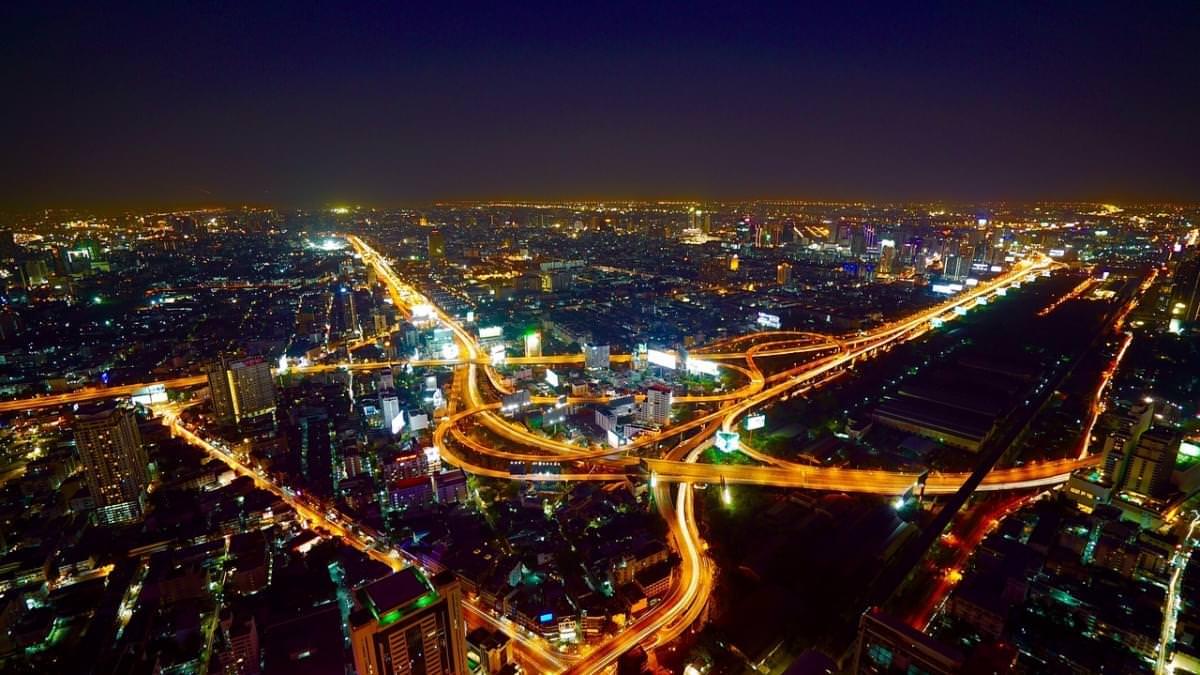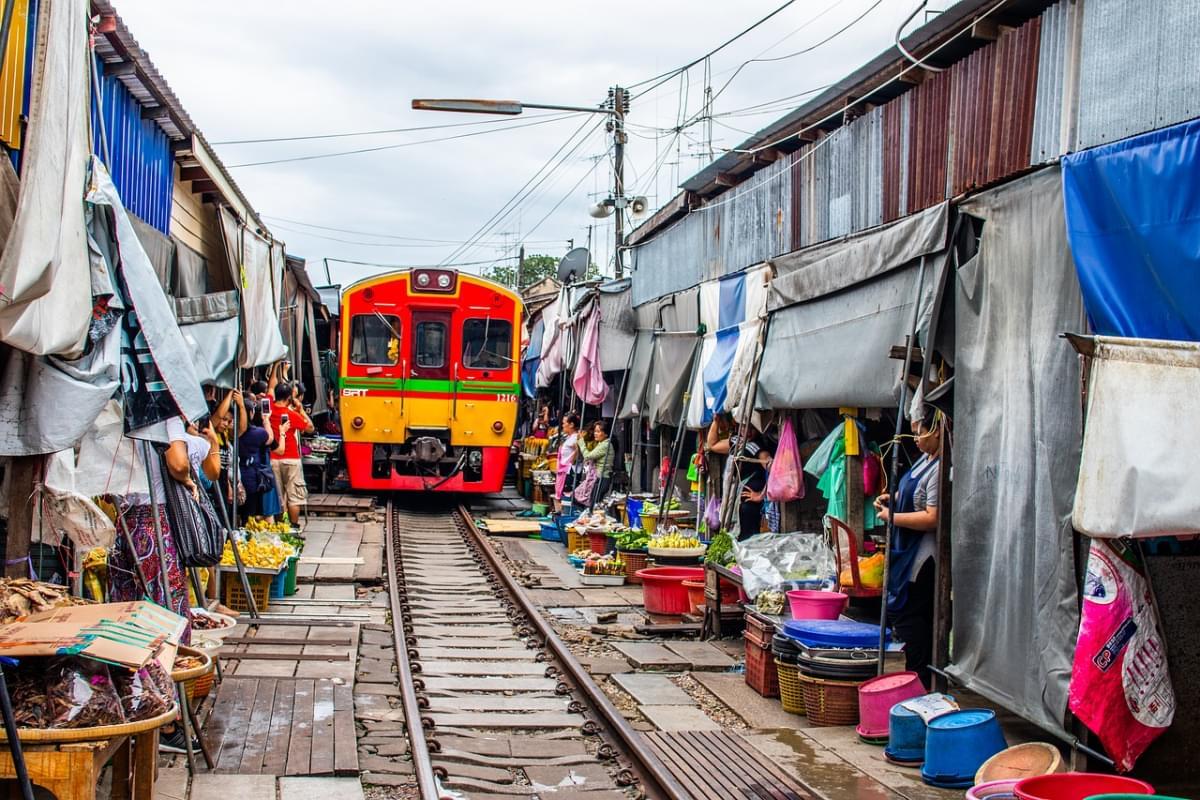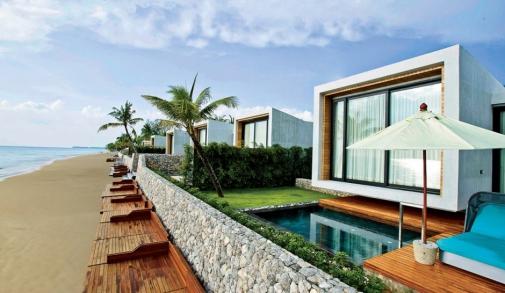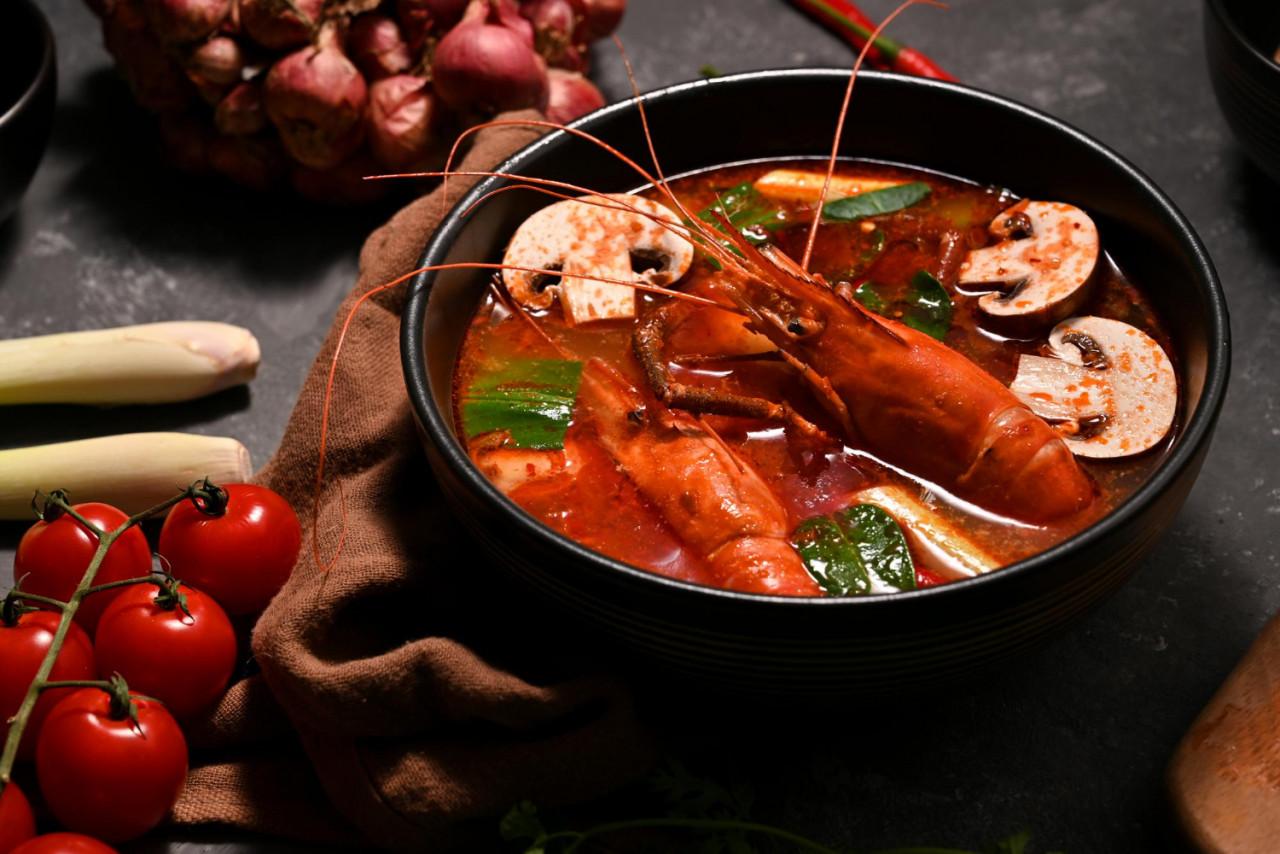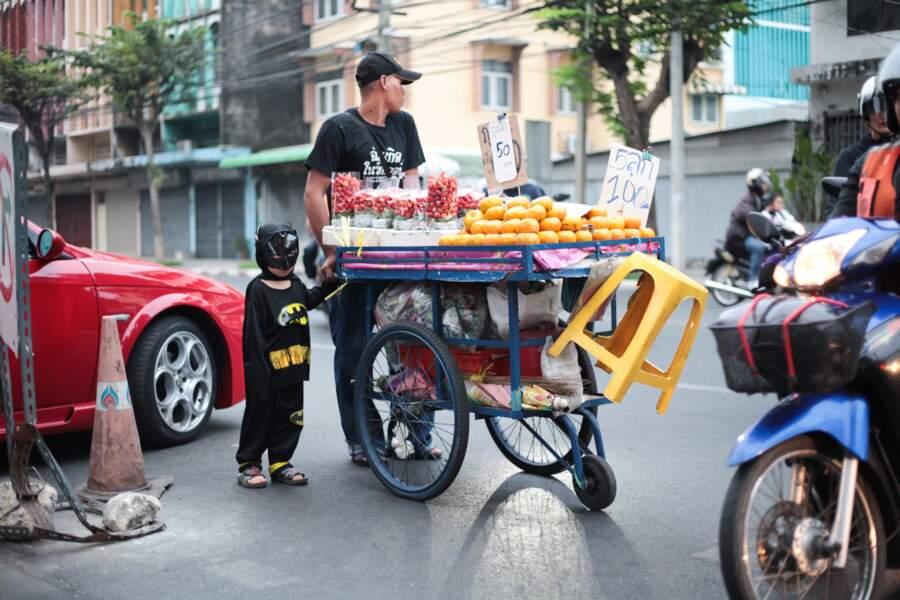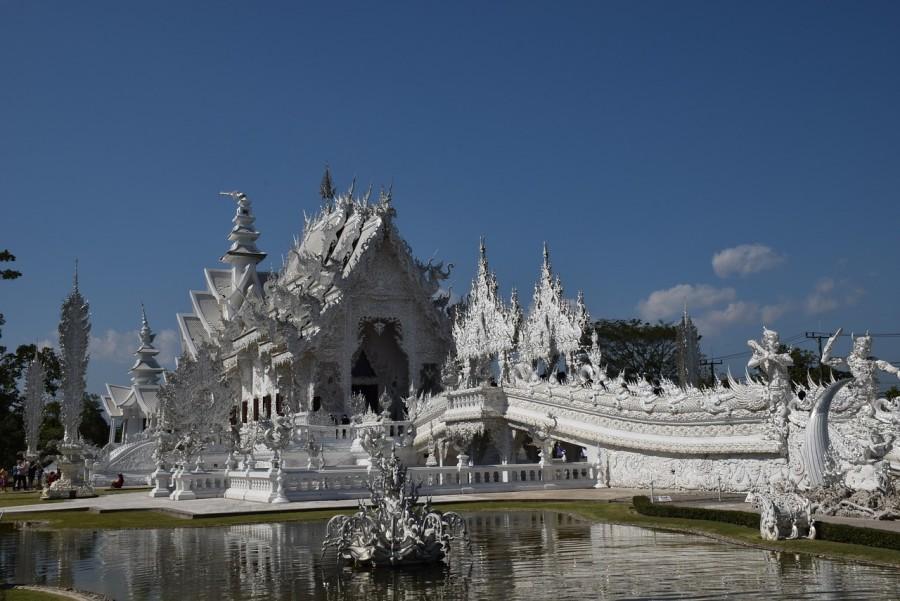
Although Chiang Rai is not particularly charming, it does have some interesting and memorable things to see, such as the wonderful White Temple (which alone is worth the trip!) and other characteristic Buddhist temples. Therefore, below you will find all the information you need to explore Chiang Rai and the Golden Triangle.
Where is it located and how to get there
The city of Chiang Rai is located in northern Thailand and is about 800 km from Bangkok. It is the capital of the province of the same name and a little smaller than Chiang Mai, counting 70,000 inhabitants (compared to Chiang Mai's 130,000), from which it is 200 km away.
Its terrain is mountainous and it is located 600 metres above sea level.
From Italy you land in Bangkok (direct flights from Rome and Milan, about 11 hours, compare flights); from here, internal flight toChiang Rai's Mae Fah Luang International Airport (one hour flight for about €30.00) or, alternatively, coach trip (more than 10 hours for about €15.00).
What to see in Chiang Rai and the Golden Triangle
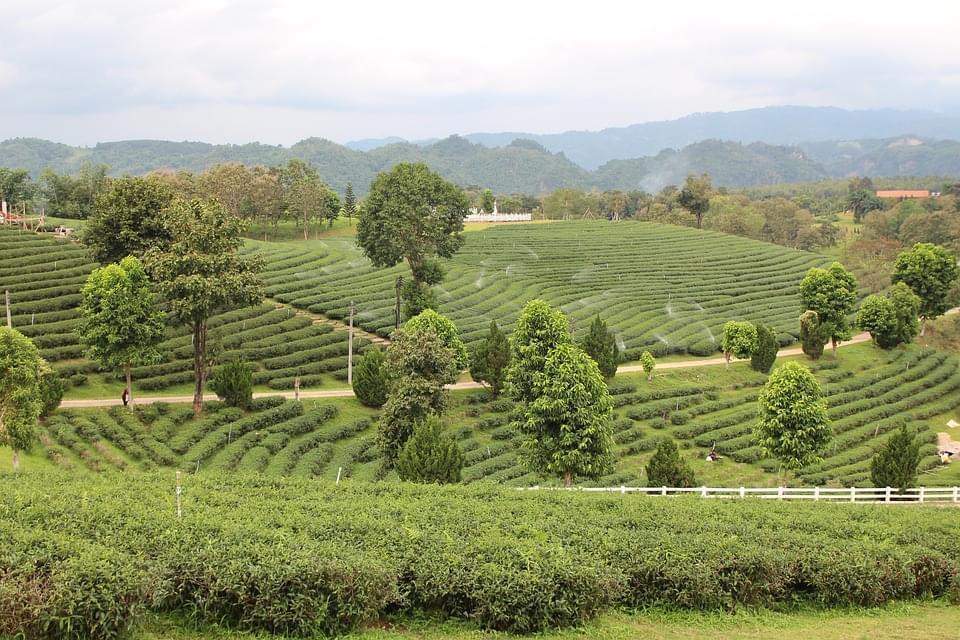
In the past, Chiang Rai was prominent as home to two of Thailand's most important sacred images, namely the Emerald Buddha (the original is now in Bangkok) and the Phra Singh Buddha.
Today, as mentioned above, Chiang Rai is a destination to dedicate a short tour to and from which to immerse yourself in one of the country's most famous places: the Golden Triangle.
1 - White Temple (Wat Rong Khun)
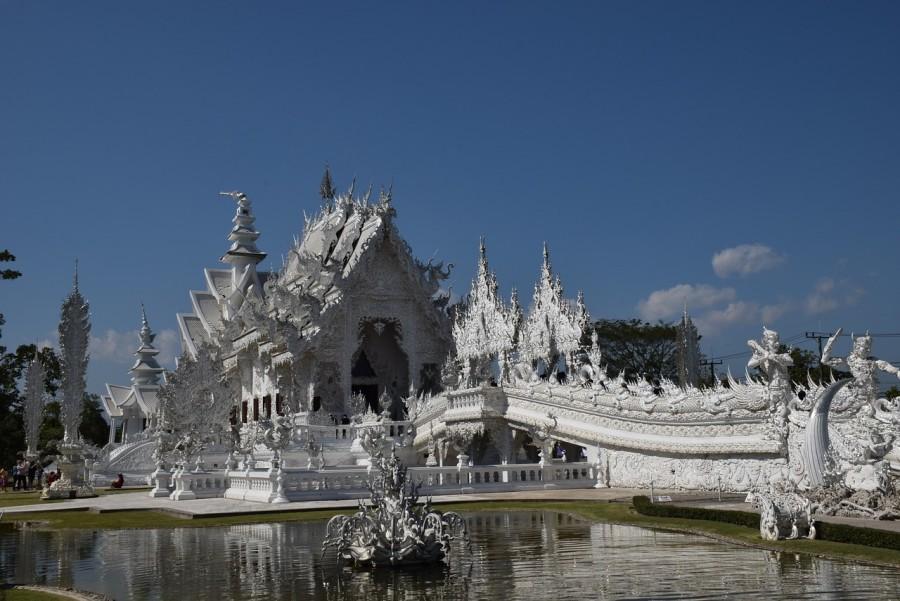
It iscompletely white and covered with mirrors to reflect the light. From the outside, the extravagance compared to other temples is obvious, and inside, it is even more striking, with various depictions of the current world (9/11 attack, Hello kitty and Pikachu included!).
SEE ALSO: Visit Wat Rong Khun Temple, Chiang Rai: Getting there, prices and tips
Getting there: Southbound bus (tell the driver to drop you off near the temple), by scooter from the city centre, or by collective taxi (€3.00 - €4.00) - Get directions
Hours: 8am to 5pm
Ticket price: 50 bath (€1.32)
2 - Baan Dam (Black House)
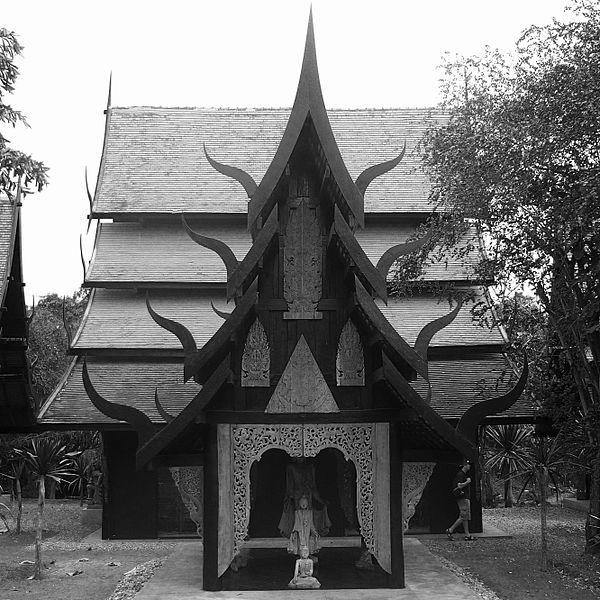
It is acomplex of black wooden houses, part museum (with extensive collections of objects such as skeletons, horns and animal skins) and part open-air art studio.
There areabout 40 houses (which cannot be visited inside) scattered around the garden, where there is also a pond.
It is possible to include it in a tour of Chiang Rai along with the White Temple.
Getting there: Located about ten kilometres from Chiang Rai, the quickest way is by collective tuk tuk, for about €7.00 - €8.00, or independently by hiring a scooter - Get directions
Hours: 9am to 5pm
Ticket price: 80 bath (€2.10)
3 - Golden Triangle
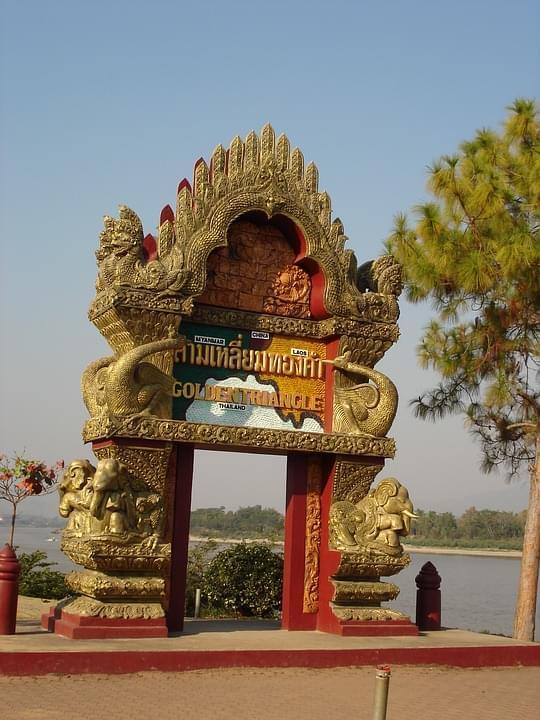
The point called the Golden Triangle is at the confluence of the Ruak and Mekong rivers, known as Sop Ruak and where the three countries embrace.
In this location, the opium fields that used to be the wealth of the area have been replaced by coffee and tobacco since 1970. Here there is the Opium Museum and many visitors come, especially to take fantastic photographs: the view is breathtaking!
Given the uniqueness of the area, the best way to visit is with a guided tour from Chiang Mai.
Getting there: the most recommended way to get there is by day trip, or by car/motorbike for just over an hour's drive. There is also the bus (Greenbus Thailand), which leaves twice a day, takes 56 minutes and is the cheapest method (€3.00 - €5.00) - Get directions
Hours: the museum opens from 7am to 7pm
Ticket price: for the museum 50 bath (€1.31)
4 - Wat Phra Kaew (Temple of the Emerald Buddha)
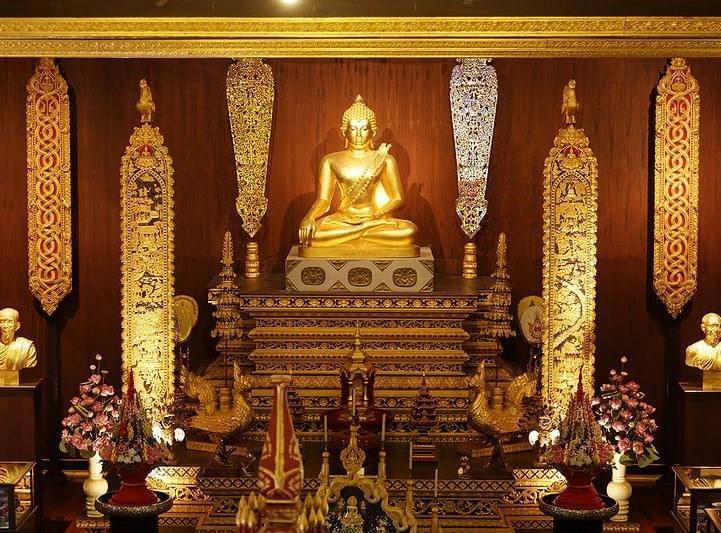
In a small Lanna-style pavilion to the right behind the viharn is a copy of the original sculpture made in China from no less than 300 kg of light green jade, donated by a Chinese millionaire.
How to get there: the temple is located at the intersection of Sang Kaew Road and Trairat road, right in the centre, so can be reached on foot or by collective taxi for a few euros - Get directions
Hours: 7am to 6pm
Ticket price: 500 bath (€13.11)
5 - Wat Phra Singh (Temple of the Lion Buddha)
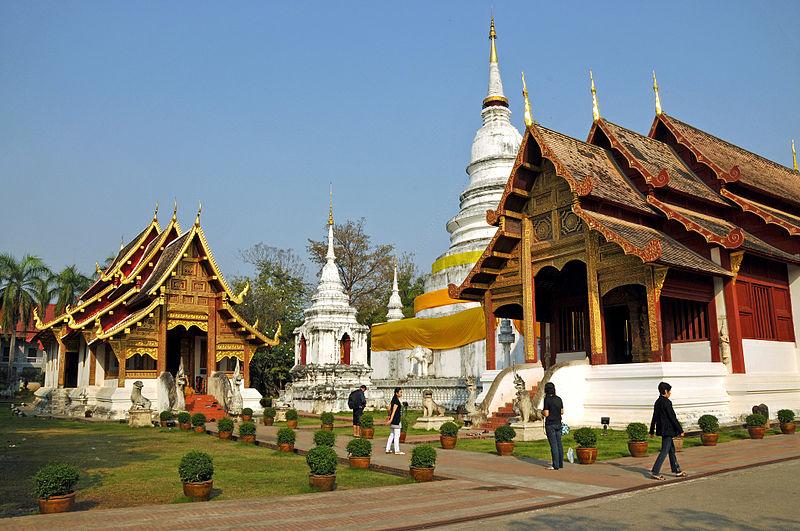
The entrance, adorned with a staircase, is protected by Singha (guardian lions), while wooden doors lead to the interior, where a gilded bronze reproduction of the Phra Singh statue can be admired.
Directions: located at the junction of Singhaclai Road and Tha Luang Road, reachable on foot or by collective taxi - Get directions
Hours: 6am to 5pm
Ticket price: free entrance
What to see in a day
If you only plan to spend one day in Chiang Rai, the best option is to organise aday trip from Chiang Mai. During this day you will be able to devote yourself to the temples in the city, naturally excluding the surrounding area and the rest of the Golden Triangle.
Let's now take a look at therecommended itinerary for visiting Chiang Rai in one day.
First time in Chiang Rai? To optimise your time and get a first approach to the city, we recommend booking a guided tour with a local guide.
09:00 - Wat Phra Kaew (Temple of the Emerald Buddha)
10:30 - Wat Phra That Doi Chom Thong
12:00 - Baan Dam (Black House)
15:30 - Wat Phra Singh (Temple of the Lion Buddha)
17:00 - Wat Rong Khun (White Temple)
19:30 - Clock Tower
20:00 - Dinner and Night Market (Night Bazaar)
What to see in 3 days
With three days at your disposal, you can devote the right amount of time to all the most important sights, and add interesting excursions in and around Chiang Mai and the Golden Triangle to the itinerary of Day 1.
Day 1: Wat Phra Kaew (Temple of the Emerald Buddha), Wat Phra That Doi Chom Thong, Baan Dam (Black House), Wat Phra Singh (Temple of the Lion Buddha), Wat Rong Khun (White Temple), Clock Tower, Night Market
Day 2: Day trip to Chiang Mai and visit to the Elephant Sanctuary(info and costs here)
Day 3: Day trip to Doi Suthep-Pui National Park and Wat Phrathat Doi Suthep Temple(info and costs here) or day trip to Inthanon National Park(info and costs here)
What to do in Chiang Rai and the Golden Triangle: excursions and tours When to go? Info on climate and best time
Month | Average temperatures (min/max) | Rainfall (days/mm) |
|---|---|---|
January | 15 / 30° | 2 days / 26 mm |
February | 17 / 35° | 1 day / 7 mm |
March | 23 / 38° | 2 days / 25 mm |
April | 26 / 39° | 4 days / 55 mm |
May | 26 / 37° | 15 days / 230 mm |
June | 25 / 34° | 16 days / 276 mm |
July | 24 / 32° | 21 days / 371 mm |
August | 24 / 33° | 18 days / 349 mm |
September | 24 / 33° | 15 days / 257 mm |
October | 22 / 33° | 7 days / 120 mm |
November | 19 / 32° | 3 days / 32 mm |
December | 16 / 30° | 5 days / 66 mm |
Climate: tropical, averaging around 28°C. There are three seasons: the dry and relatively cool season (December to February) in which the evenings drop to around 16° C, the very hot season (March to May) with temperatures around 37° and peaks of 40°, a lot of humidity and little rain. Finally, the rainy season (May to November) when monsoon winds bring heavy thunderstorms, mainly in August, the rainiest month of the year.
Best period: the dry season, i.e. from December to February. The sky is sunny, temperatures are mild during the day and cool in the evening, rainfall is sporadic and there is little humidity. It coincides with the high season, so prices are higher.
Period to avoid: the summer, with August being the most important. However, if you decide to go during the rainy season, you can save money (discounts on flights and hotels are up to 50%) and avoid the tourist crowds.
Tips: in winter, bring light clothes for the day, a jacket and jumper for the evening; in summer, light clothes, mackintosh, hiking shoes, sweater for the evening. To enter the pagodas, take off your shoes and wear loose clothing. If you leave during the rainy season, all you need to do is to equip yourself appropriately and you will still have a wonderful holiday, taking an umbrella and a waterproof jacket with you, planning indoor visits on rainy days and trying to make the most of sunny moments for excursions.
Getting around
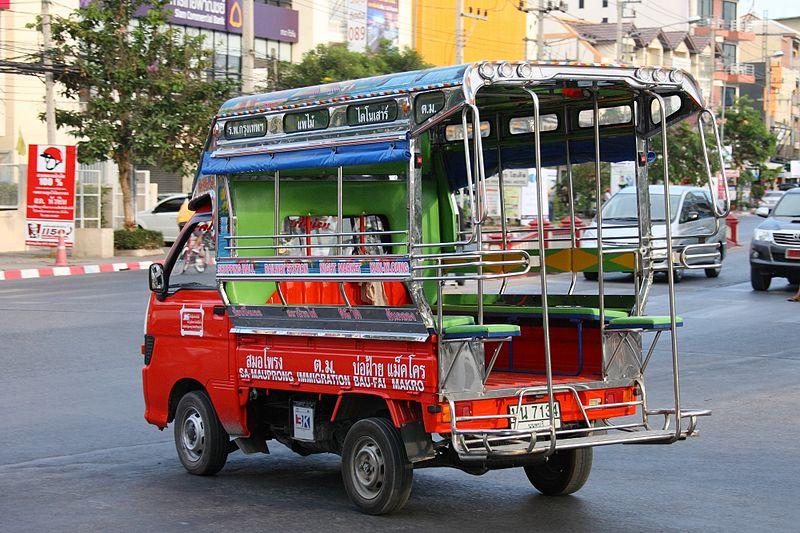
For short trips, tuk-tuks and red songthaws are fun and inexpensive. For longer journeys we recommend taxis, better still private drivers, which you can hire for the whole day.
The best solution is to directly purchase an organised one-day tour with transfers included.
Given the chaotic traffic conditions, we do not recommend hiring a car or scooter. If, however, you are not intimidated by the experience, there are many rental agencies, both international and local, and even some accommodations offer this service for their customers (average cost scooter €7.00/day).
Recommended solutions and means: tuk-tuk, songthaew, private driver
Solutions and means not recommended: car, scooter
How much does a holiday in Chiang Rai and the Golden Triangle cost? Prices, offers and advice
The cost of living in Chiang Rai is low, as in the rest of Thailand.
Local currency: Thai Bath (THB) / €1.00 = THB 33.55
Food: eating street food costs €1.00 / 2.00, a two-course lunch or dinner in a mid-range restaurant around €5.00 / 6.00 per person - more info on what to eat in Chiang Rai and where
Attractions: Entrances to temples are around €1.00 / 2.00.
Accommodation: for a night in a cheap hotel you pay from €7.00, if you take a house, for example for a week, the expense will be no more than €20.00 - compare the best accommodation on Booking
Prohibitions: Possession, sale, import and export of electronic cigarettes is strictly prohibited. Punishable by a fine or imprisonment of up to five years.
Phone sim: buy a local sim card at the airport, to be used for internet browsing and phone calls. It is often difficult to find them in supermarkets or specialised shops.
Considering, therefore, a cheap flight and daily expenses, a holiday in Chiang Rai and the Golden Triangle costs just over €900.00 per person for 15 days. As a couple, you can spend less than €2,000.
